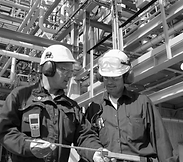Engineering and Technology Quarterly Reviews
ISSN 2622-9374




Published: 02 May 2019
Rainwater Harvesting for Drinking Water in Bali, Indonesia
I Nyoman Norken, I Ketut Suputra, Ida Bagus Ngurah Purbawijaya, Ida Bagus Putu Adnyana
Udayana University, Indonesia

Download Full-Text Pdf
10.5281/zenodo.2657324
Pages: 55-61
Keywords: Drinking Water, Rainwater Harvesting, Cubang, Effectiveness, Kubu Subdistrict, Bali
Abstract
The water source on the island of Bali, Indonesia, tends to be uneven and depends on geographical and climatological factors. In the remote area at Kubu Subdistrict, Karangasem Regency experiences with very limited water supply, due to the absence of water sources and lack of water services from the piping system. In such conditions, people harvest rainwater and then collect it with cubang (water reservoir) to meet their daily drinking water needs. This study aims to find out how effective the cubang that has been made by the community to meet drinking water needs and how ideal cubang model for the community should be made so that water needs can be fulfilled throughout the year. The results showed that cubang which had been built less effectively to meet drinking water needs, which was caused by the age of the cubang which had reached 20 years old, even more, most of them had already leaked, the size of cubangs varied greatly with the volume of water collected was not sufficient with needs all the time. Water collected in a cubang, harvested through the roof of a house is only able to meet water needs for 4 months a year, the rest for 8 months, the community buys water from tank trucks. To meet water requirements every year, a new cubang model is needed and equipped with a roof as a rainwater harvester. For cubang in leaked conditions can be repaired with ferrocement layers to function properly and last longer.
References
-
BPS Kabupaten Karangasem, (2016), Curah Hujan Kabupaten Karangasem 2012-2016 (Rainfall in Karangasem Regency 2012-2016), https://karangasemkab.bps.go.id/statictable/2016/08/01/3/jumlah-curah-hujan-2012-2016.html
-
BPS Kabupaten Karangasem (2017), Kecamatan Kubu Dalam Angka 2017 (Kubu Subdistrict in Numbers 2017), https://kuburayakab.bps.go.id/publication/2017/09/22/4d7199157c94ccaec173142e/kecamatan-kubu-dalam-angka-2017.html
-
Beritabali.com. (2016), Warga Kubu Karangasem Butuh Cubang Air (People of Kubu Karangasem need Cubang), https://www.beritabali.com/read/2016/12/05/201612070010/DPRD-Bali--Warga-Kubu-Karangasem-Butuh-Cubang-Air.html
-
JICA, (2006), The Comprehensive Study on Water Resources Development and Management in Bali Province in The Republic of Indonesia, JICA-PU Bali Province
-
Geredeg I Wayan, (2011), Rencana Pembangunan Jangka Menengah (RPJM) Daerah Kabupaten Karangasem 2010-2015 (Medium-Term Development Plan of Karangasem Regency 2010-2015), Government of Karangasem Regency.
-
Mediatataruang.com, (2016), Standar Kebutuhan Air (Standard of Water Ned),
-
Waskom, R (2008), Graywater Reuse and Rainwater Harvesting, Colorado Water Resources Research Institute, Colorado State University



